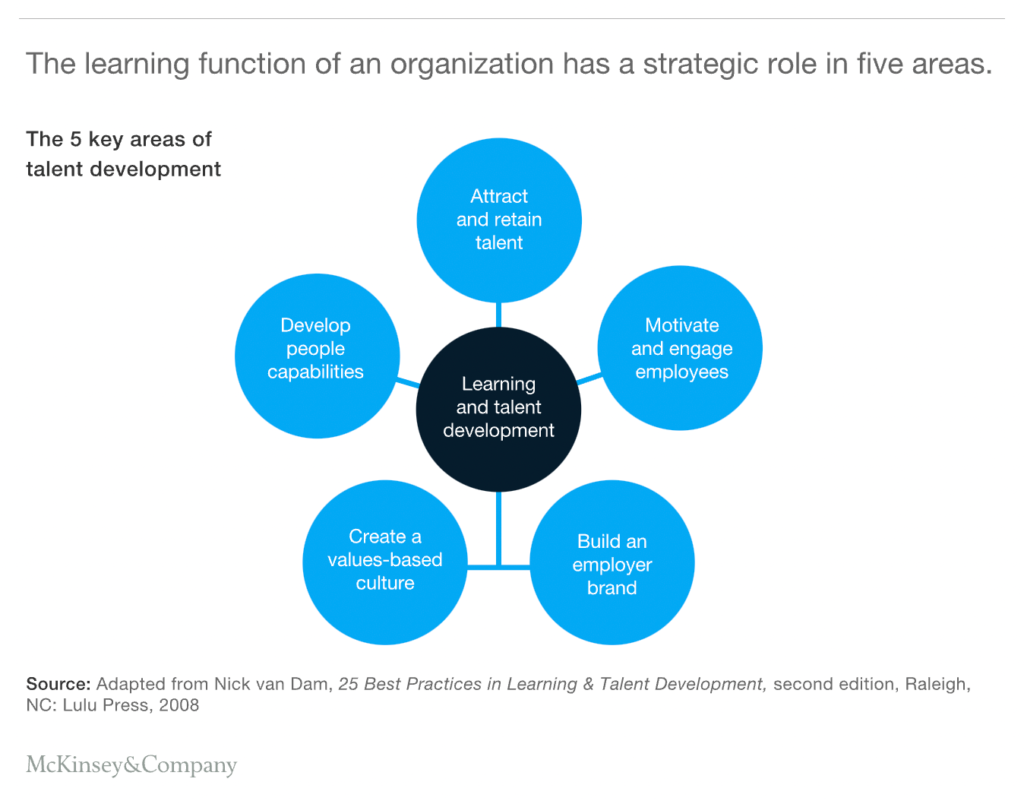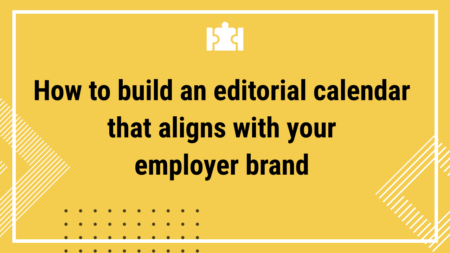Studies show that career growth opportunities are a top priority for employees in 2023. In fact, 83% argue that what they care most about is improving their skills, whereas 88% are planning to spend more time in this direction. The downside is that employees don’t believe their employer provides adequate work conditions for their career growth. Only 26% pointed out that their organization advised them to learn a new skill, and an even lower percentage of only 15% say they feel encouraged to transition to a new/better role.
“The way we look at career development has changed. It is no longer a linear path, where employees go from junior to senior roles, but a more dynamic path where people are interested in jumping between departments. For organizations and people teams, facilitating this transition is challenging”, says Lavinia Mehedintu, Co-Founder & Learning Architect at Offbeat.
To find out more about how employees can transition from one role to another, we’ve spoken with Alecsandra Botosaneanu, L&D Manager at Amber.
“We have a successful role transitioning program from QA to game design at Amber. Following an application process, participants move on to an interview where they get detailed feedback on their performance to a given assessment. Regardless of whether or not they passed it, everyone is invited to participate in a training session. At the end, those that make themselves noticed get a ‘high potential’ mark, and as roles in game design open up, they can make the transition.”
Alecsandra Botosaneanu, L&D Manager at Amber
When L&D is not supported, employees feel that they’re stagnating, eventually triggering high attrition within the organization. Now that we’ve switched from the Great Resignation to the Great Reshuffle, we’re seeing more and more senior leaders are reframing cultures, work models, and company values. Employees want greater fulfillment and increasingly more are rethinking priorities by focusing more on WHY they work rather than on HOW they work.
The changing state of L&D: then vs now
It’s no secret that the state of L&D for career development has changed in the last decade, and following an interesting conversation with Lavinia Mehedintu, Co-Founder & Learning Architect at Offbeat, we’ve learned that 2023 will focus on supporting knowledge sharing within the organization.
“Because there’s less money to bring knowledge from the outside in, I’m seeing more interest in how we can support knowledge sharing within the organization. There’s a rising trend currently emerging in L&D, and that’s AI in all forms. Surprisingly, people are not adopting it as fast as we assumed. But the interest is there and the curiosity to try out the tools available.”
Lavinia Mehedintu, Co-Founder & Learning Architect at Offbeat.
This year, customization is the key to aligning business goals and ROI with employee goals and career growth preferences. Therefore, developing personalized learning paths is the key to making learning and development valuable for everyone. Adaptive learning caters to the development of programs capable of filling learners’ skill gaps. At the same time, L&D departments are using instructional, content services, and L&D platforms to provide customized pathways for learners.
Customized L&D for sustainable business and employee growth
Career development is one of the main reasons employees leave, with 94% of workers pointing out that they would stay longer if their company invested more in their career growth. But as an organization, embracing technology is not enough to develop a sustainable L&D framework.
Learning and development is an excellent tool for improving workplace culture, bridging skills gaps, and boosting employee engagement and retention. But it’s also a tool for increasing ROI and profit. Now, more than ever, we must understand that L&D has a dual purpose: employee-centric and business-oriented.
The human side of learning is just as important, as increasingly more employees choose to work in companies that feel right; but that feeling and connection can only be experienced when L&D managers acknowledge the importance of upskilling employees. Apart from helping organizations keep up with market trends, upskilling plays a fundamental role in employee engagement and retention. A recent study highlights that 47% of employees will quit if their employer doesn’t encourage upskilling.
“For L&D to have value, it needs to get closer to the business and create business impact. To do that, we’re trying to make L&D a dynamic process that leverages ad-hoc mentorship programs created by each team separately. From community gatherings and one-on-one meetings between juniors and seniors to self-paced learning (e.g tutorials from the tech stack creator, Udemy courses), our main goal is to focus technical upskilling of our current employees.
Alecsandra Botosaneanu, L&D Manager at Amber
A subsequent L&D approach we’ve been implementing at Amber caters to employees who are not associated with a particular project. Following a preferred learning program of a new tech stack, for example, we encourage the creation of mock-up projects to test the new skill and offer feedback.” Alecsandra Botosaneanu, L&D Manager at Amber
How L&D manages the growth and development of employees
A core responsibility of L&D is to manage the growth and development of people while also supporting additional business priorities. The strategic role of L&D incorporates 5 areas:

Improving business productivity was once the sole purpose of offering learning opportunities to employees. Today, learning plays a big part in retention, and employees are retained as long as the company contributes to their personal and professional growth. According to LinkedIn’s 2023 Workplace Learning Report, the 4 main focus areas of L&D for this year are:
- Aligning learning programs to business goals
- Upskilling employees
- Creating a culture of learning
- Improving employee retention
Internal mobility and career development make both organizations and people agile. Empowering people with meaningful development opportunities expands overall workforce skills, ultimately helping organizations act on the opportunities and succeed.
“We frame development around three E’s — Education, Experience, and Exposure. Education includes programs and resources employees can use to build the skills needed to be successful. Experience includes employees considering projects, assignments, or tasks they can take on to increase their skills and prepare for future roles. Exposure encourages employees to be intentional about interactions with people, business areas, or organizations that increase their visibility and give them a holistic view of Johnson & Johnson.” (Sandra Humbles Chief Learning Officer, Johnson & Johnson)
Tools of the trade in L&D to facilitate career development
Building a successful L&D framework starts from within. Programs that support informal learning, such as mentoring and coaching matter just as much as learning on-the-job, leadership shadowing, digital learning, and action-based learning. Forget perfection and aim at progression when integrating L&D into the employer brand for the business and the workforce to grow and expand organically.
Regardless of industry or size, building a successful L&D framework starts from within. Programs that support informal learning, such as mentoring and coaching matter just as much as learning on-the-job, leadership shadowing, digital learning, and action-based learning. In terms of tools of the trade, Lavinia mentioned several of the most efficient in the market.
“I’m going to start with an automation tool called Zapier, which aims at organizations on a budget, or at L&D teams that can’t afford to invest in intricate, complex tools. I think Zapier can do an amazing work because it’s easy to integrate with other apps to streamline workflow. Also, I’m excited about Sana Labs, which is an AI-powered learning platform with a Zoom capability to facilitate live sessions. It’s super clean, very intuitive, very easy to use. Additional tools I would recommend are HowNow and Learnerbly for lowering information overload.”
Lavinia Mehedintu, Co-Founder & Learning Architect at Offbeat.
Closing thoughts
For L&D activities to have an impact, they must be aligned with short-term and long-term business goals. Also, they need to be part of the HR agenda. Learning and development play an important role in recruitment, performance management, onboarding, employee experience, and of course, employer branding. The sooner you acknowledge the importance of personal and professional growth within the organization, the better chances you have to build a workforce of engaged and retained employees.






